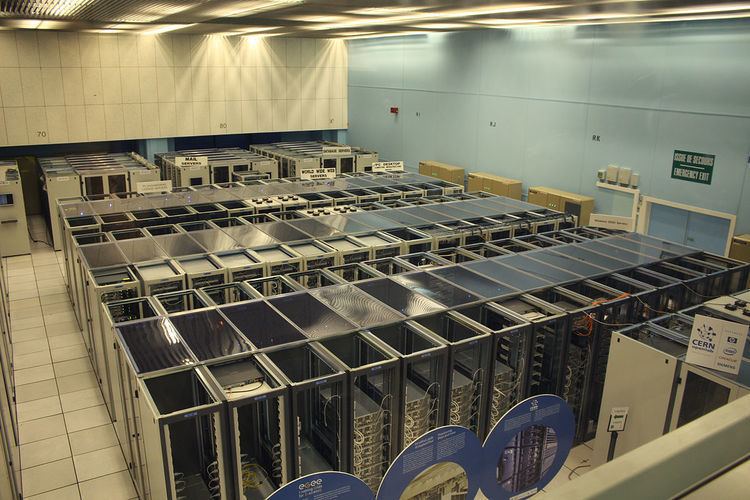 | ||
Data center environmental control is a constructive generic framework for maintaining temperature, humidity, and other physical qualities of air within a specific range in order to allow the equipment housed in a data center to perform optimally throughout its lifespan.
Contents
Air flow
Air flow management addresses the need to improve data center computer cooling efficiency by preventing the recirculation of hot air exhausted from IT equipment and reducing bypass airflow. There are several methods of separating hot and cold airstreams, such as hot/cold aisle containment and in-row cooling units.
Overheating of data center equipment can result in reduced server performance or equipment damage due to hot exhaust air finding its way into an air inlet. Atmospheric stratification can require setting cooling equipment temperatures lower than recommended. Mixing the cooled air and exhausted air increases refrigeration costs.
Temperature
IT vendors recommend maintaining temperature of 70–75 °F (21–24 °C). The American Society of Heating, Refrigerating and Air-Conditioning Engineers (ASHRAE) states that the recommended temperatures is between 68–77 °F (20–25 °C), with an allowable range spanning 59–90 °F (15–32 °C). Research has shown, however, that the practice of keeping data centers at or below 70 °F (21 °C) may be wasting money and energy. Overcooling equipment, in environments with a high relative humidity, can expose equipment to a high amount of moisture that facilitates the growth of salt deposits on conductive filaments in the circuitry.
Although a high cooling temperature is more efficient, overcooling of smaller server rooms can provide reserve thermal protection in the event of cooling system failure, or in outage situations where the computers are provided emergency backup power but cooling systems are not. In such situations, the equipment can continue to run and tolerate several degrees of temperature rise before system damage from overheating occurs. Environmental reserve cooling capacity may not be feasible in dense equipment environments such as datacenters, but those locations are more likely to have backup cooling and emergency power for cooling.
Data center operators should also monitor the difference between intake and outtake temperature within their racks. The temperature delta may not exceed 20 °C or 35 °F.
Rack hygiene
Blanking plates and other fittings around the edge, top, floor, or the rack direct air intake so that only air from the cold aisle reaches equipment intakes and prevent leakage of exhaust air into the intake area. Fans on the top or rear doors of the cabinet ensure a negative pressure for exhaust air coming out of equipment. Effective airflow management prevents hot spots, which are especially common in the top spaces of a rack, and allows the temperature of cold aisles to be raised.
Aisle containment
Containment of hot/cold aisles and ducting hot air from cabinets are intended to prevent cool and exhaust air from mixing within server rooms. Rows of cabinets are paired to face each other so that cool air can reach the equipment air intakes and warm air can be returned to the chillers without mixing with the cold air supply. A more recent addition to the consideration of above floor containment is below floor air flow control. A range of underfloor panels can be fitted within the raised floor plenum to create efficient cold air pathways direct to the raised floor vented tiles.
Containment is generally implemented by physical separation of the hot and cold aisles, using blanking panels, PVC curtains or hard panel boards. Containment strategies could differ based on various factors including server tolerance, ambient temperature requirements and leakage from data centers. Either the cold aisle or the hot aisle can be contained.
Access floor
The type of floor a facility uses can also greatly affect its air flow capabilities and limitations. Specifically, a raised floor allows for under-floor cable management as well as air flow. There are two main classifications of such access floors: low-profile floors (under 6 inches in height) as well as standard/traditional access floors (over 6 inches).
